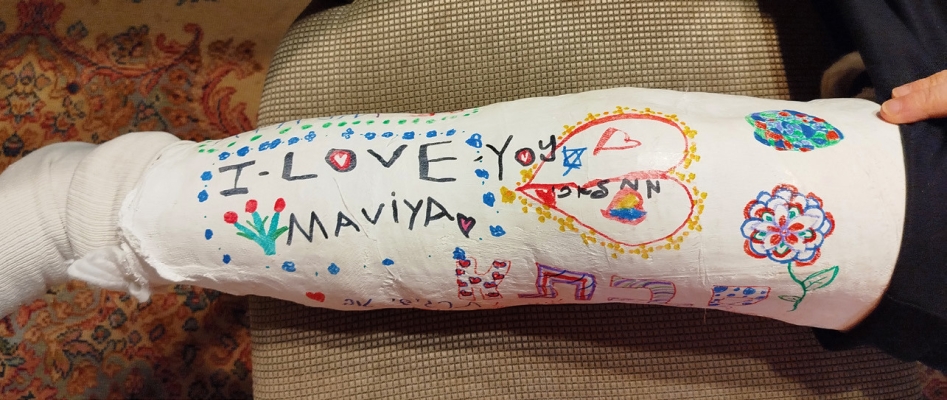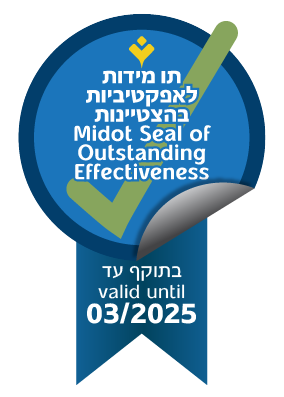SPLAT!
I found myself SPLAT on the pavement having tripped over someone's foot, banging my knee really hard on the concrete. I had fractured my patella—my kneecap.
I wore a full length cast on my left leg for three weeks and a brace for another three weeks, leaving my left foot and ankle unfettered so that I could move my toes and ankle. I could walk, but with a straight, extended knee.
Once the brace was removed, the "fun" began. I could not bend my knee. My younger daughter, a physiotherapist, insisted from the very beginning, that I wiggle my toes a lot and extend my heavily clad leg in all directions to exercise my hip joint. But once the brace was removed, serious exercises began to teach my knee to bend again. She had prepared a surprise for me.
From experience, she knew that her patients skipped doing their series of exercises; instead of three times a day, they skimped to twice or even once a day. So she came up with an ingenious idea.
She instructed me personally on how to perform the more difficult exercises, but distributed a series of "bonus" exercises to my various grandchildren and great-grandchildren with instructions to have their parents video them, adding a vocal get well message for me. These videos were to be sent back to her. Every day, she sent the appropriate video-exercise to me to do, three times a day. Each was of increasing difficulty and was to be added to the others.
It was a source of encouragement, empathy and even pleasure for me to do these exercises together with the videos of my grandchildren. Those performed by the infant great-grandchildren were very funny with giggles and laughter. The younger grandchildren projected a sense of responsibility. The older grandchildren expressed a sense of concern and seriousness in their demonstration.
I felt the family was a part of my rehabilitation; it was an expression of love. I did the exercises religiously, especially after seeing the effort and time which went into the planning and execution of the videos. I thanked each child, and they in return asked me if "their" exercise helped me. They are delighted that I can climb six flights of steps.
My daughter told me that one in three adults over the age of 65 will fall and may need rehabilitation. There are exercises to prevent a potential fall, which include those which improve one's balance and strengthen muscles. Kupat Cholim has pamphlets placed in their clinics which are available to the public on preventing falls for the older population.
Strengthening Muscles:
A person's reflexes are slower if he or she does not engage in some form of exercise. Older people should commit themselves to a form of regular, daily exercise or sport. Their reflexes will be faster and their chances of falling diminished. Research has shown that lack of exercise, rather than old age, decreases the speed of one's reflexes.
Be vigilant. Take care of yourself. You are worth it!
I once knew a woman named Stella,
Who tripped and broke her patella;
Rehabilitated well;
Can't tell she once fell.
Was seen dancing a waltz with her fella!
Most of us are aware of a loss of bone density as we age which can lead to osteoporosis. However, many are not aware that from about the age of 30, we naturally lose 3-5% of our muscle mass per decade. If this muscle loss worsens, it can advance to a condition called sarcopenia, a loss of muscle strength. This happens as we get older and are less physically active. Getting up from a chair, walking, even twisting the cover off a jar or carrying groceries can become more difficult. It can eventually lead to falls and injury, Sarcopenia can be prevented, managed and slowed down by resistance training, lifting weights, using resistance bands etc.








Comments